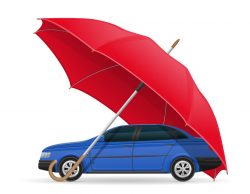Many insurance companies have announced rebates on “drive insurance” due to COVID-19. Yes, we intentionally called car insurance “drive insurance.” It’s a bit of an unusual name. However, it’s a useful name because it points out the ridiculousness of having car insurance during this time when no one is driving. Right now, having drive insurance is like having workers compensation insurance, when you don’t have any workers. Nobody would do that.
Want to find out if you’re getting a fair price on your drive insurance? Click the button below.
Who needs drive insurance?
In our house, we have three cars. In the last five weeks each vehicle has been driven once. The estimated total milage driven in the five-week period is approximately 15 miles. This is an annualized mileage of only 150 miles. Compared to the average number of miles vehicles are driven each year, this is 0.4% of normal. From an insurers point of view, it’s safe to assume the cost associated with insuring cars that are not driven is close to 0% of the cost of insuring cars that are being driven regularly.
Insurers Giving Drivers the Sleeves of Their Vest
In a brilliant public relations move, the car insurance industry announced plans to rebate hundreds of millions of dollars to consumers. Some companies even announced billion dollar rebates. In total, the first week of announcements added up to $7.5 billion in rebates.
We cheekily refer to this act of benevolence(?) as “giving away the sleeves of the vest.” Using some simple back of the envelope math, we estimate that while giving back $7.5 billion was a commendable act, during the same two month period, profits are likely to increase by double that amount, or more. Yes, an incremental $15 billion in profits.
A gift from the profit gods
Here’s what is truly amazing about this profit increase. No cost reduction actions were necessary. In most industries, to increase profits even slightly, companies must trim headcount and invest in more advanced technology. In short, many hard decisions about how to run the business must be made. Hopefully, those decisions will pay off over time.
In the drive insurance industry, company overhead runs about 25 to 30%. None of this overhead had to be eliminated to realize this estimated $15 billion increase in profits in a two month period. While insurance is a tough business, the profits currently being enjoyed on drive insurance are truly excessive, even after rebates.
Will the rebates be good or bad PR?
So far the public relations effect of these rebates has been positive. Nevertheless, multiple consumers have reached out to ValChoice, upset that they received price increases, simultaneous with their rebate announcements. The following came from Steve in San Jose, California:
“Our total Premium for the current period of 12/5/2019 thru 6/5/2020 is $629.68. The new Total Premium increased by $40 for the coming period of 6/5/20 thru 12/5/20 and is at $669.68. Our “Shelter-in-Place Payback” for April is $15.96 (with 2 vehicles on the policy.)
Steve continued on to say the following, “When I saw the news item, I predicted that it would be a bunch of BS and not much more than publicity for Allstate. Once other policyholders discover their new premium increase like I just did, Allstate’s publicity may turn negative in a big hurry. There are MANY people suffering financially and emotionally right now, and with all the unwanted idle time, hopefully they will speak loudly regarding this! Allstate CEO Tom Wilson should be ashamed of himself…”
A long way to go
At ValChoice, our prediction is driving won’t resume to normal levels at least through the end of 2020. Consumers for which this prediction applies should change their car insurance coverage to save money. Details of saving money on your drive insurance can be found in this blog post titled “Save up to 70% on car insurance due to social distancing.
Any consumer, whether significantly impacted by COVID-19 or not, has the option to buy stock in publicly traded car insurance companies. It appears most insurance companies are trending toward expensing these rebates. That accounting approach will give appearance of flat revenue with increased profits. However, it minimizes the profit increase, making the business cycle look less unusual than the more accurate approach of adjusting revenue (written premium) down to deduct the rebate amount.
What to do next
Our advice to consumers is to use this as an opportunity to get better insurance. Generally speaking, the companies that advertise on TV don’t offer the best quality insurance. During this time of change, take advantage of the ValChoice rating system to find a company that will actually let you “only pay for what you need” that also provides excellent protection. By going to car insurance calculator, you can click on your state. On that page, we list the five best insurance companies in your state. You can also use the calculator to understand what is a fair price, then work with those companies to see which is best for you.
Watch this video for a short tutorial on how to save $100’s or even $1,000’s on your car insurance.


No comments yet.